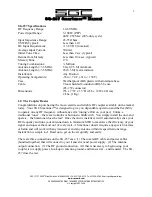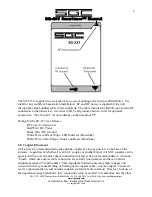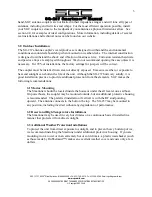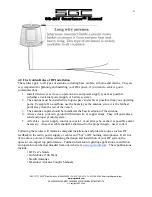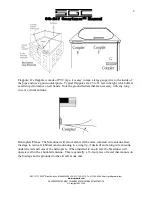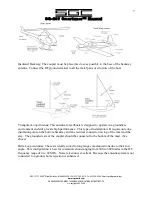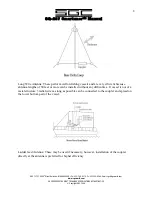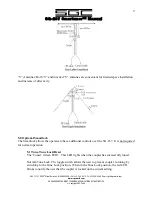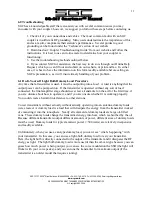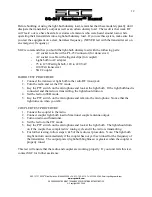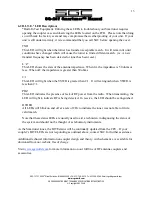
S G - 23 7 S m ar t un er ™ M anual
SGC, 13737 SE 26
th
Street Bellevue, WA 98005 USA • Ph: 425-746-6310, Fx: 425-746-6384, Email: [email protected]
www.sgcworld.com
SGC RESERVES THE RIGHT TO CHANGE SPECIFICATIONS WITHOUT NOTICE
Copyright SGC 2008
11
6.0
Troubleshooting
SGC has a knowledgeable staff that can assist you with several common issues you may
encounter with your coupler, however, we suggest you follow these steps before contacting us.
1. Check all of your connections and cables. The most common fault with an SGC
coupler is insufficient RF grounding. Many users underestimate the importance of this,
and as a result, compromise their station’s performance. Several guides to good
grounding can be found under the ‘Technical’ section of our website.
2. Download our ‘Coupler Troubleshooting Guide’ from our website and follow the
instructions. It is best to use an in-line meter to determine how your coupler is
functioning.
3. Use the troubleshooting methods outlined below.
4. If you contact SGC for assistance, the best way to do so is through our Online Help
Request, which you can fill out and submit on our website, or print and fax. In either
case, it is best to have the information on this form readily available before calling an
SGC representative, as it will insure timely handling of your problem.
6.1 Do-It-Yourself Light Bulb Dummy Load Procedure
Any time that a transmitter is used, it must be outputting into a load. A load is anything that the
output power can be pumped into. If the transmitter is operated without any sort of load
connected, the final amplifier stage should never test a transmitter on the air for the first time, if
you are unsure about how to operate it, and if you are unsure whether it is working properly.
You could create a harmful interference to other stations.
To test transmitters without actually without actually operating into an antenna, dummy loads
were created. A dummy load is a load that will dissipate the energy from the transmitter instead
of emanating it into the ionosphere. Nearly all commercial dummy loads are large oil-filled
cans. These dummy loads change the transmitted energy into heat, which is absorbed by the oil.
Because different transmitters output different amounts of power, different sizes of dummy loads
must be used. Dummy loads for typical amateur power (<500 watts) are relatively inexpensive
and readily available.
Unfortunately, when you use a can-type dummy load, you can’t see “what’s happening” with
your transmitter. In this case, you can use a light-bulb dummy load to test your transmitter.
Here, the light bulb is directly connected to the output of the transmitter and it dissipates the RF
energy as light. The light bulb dummy load is more useful than the oil-can type because you can
guess how much power is being output, you can see the voice modulation the SSB (the light will
flicker with your voice peaks), and you can tune the transmitter for maximum output (if the
transmitter is an older model that requires tuning).
Содержание SMARTUNER SG-237
Страница 1: ...SG 237 SMARTUNER INSTALLATION MANUAL...


